Toothpaste cleaning hacks – who knew that humble tube in your bathroom could be your secret weapon against household grime? I’m always on the lookout for clever, budget-friendly ways to keep my home sparkling, and let me tell you, I stumbled upon a real gem when I discovered the surprising power of toothpaste beyond just oral hygiene!
Believe it or not, using toothpaste for cleaning isn’t a newfangled idea. Our grandparents likely used it for polishing silver or removing stains, a testament to its gentle abrasive qualities. Think about it – toothpaste is designed to clean and polish your teeth without damaging the enamel. That same principle applies to many surfaces around your home.
In today’s world, we’re all looking for ways to simplify our lives and reduce our reliance on harsh chemicals. That’s where these toothpaste cleaning hacks come in! From removing stubborn water stains on your bathroom fixtures to restoring the shine to your sneakers, toothpaste can tackle a surprising number of cleaning challenges. Plus, it’s often cheaper and more readily available than specialized cleaning products. So, ditch the elbow grease and get ready to unlock the cleaning potential hidden in your toothpaste tube. I’m excited to share these simple yet effective tricks that will leave your home looking its best!
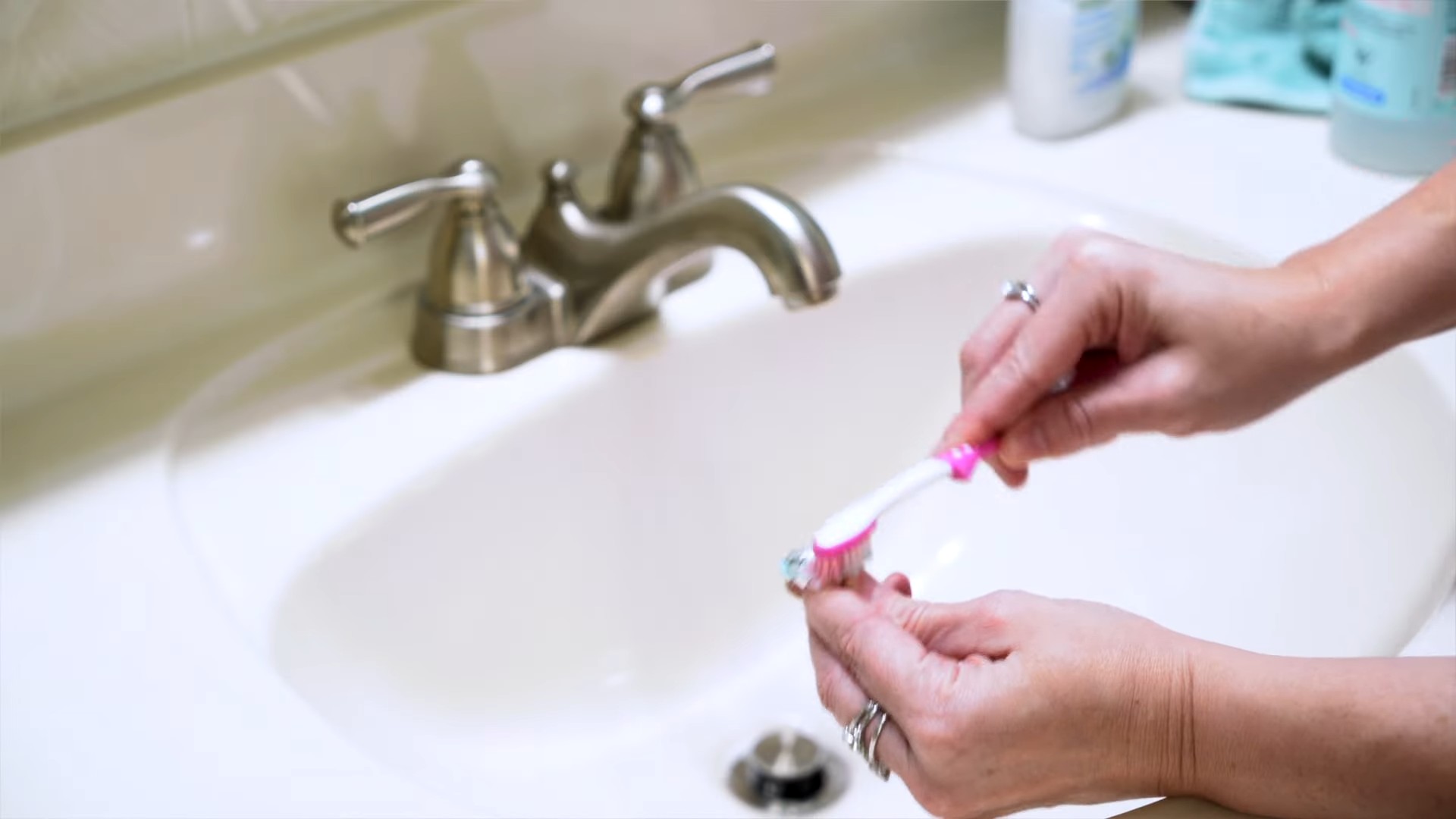
DIY Toothpaste Cleaning Hacks: Beyond Brushing Your Teeth!
Hey there, fellow DIY enthusiasts! I’m always on the lookout for clever ways to save money and tackle household chores with everyday items. And guess what? Toothpaste is a secret weapon hiding in plain sight! Forget expensive cleaning products; this humble tube can work wonders around your home. Let’s dive into some amazing toothpaste cleaning hacks that I’ve personally tried and tested.
Cleaning Silverware and Jewelry
Tarnished silverware and dull jewelry can really bring down the look of a beautiful table setting or a favorite outfit. But don’t despair! Toothpaste can restore their shine without harsh chemicals.
What you’ll need:
* Toothpaste (non-gel, white paste is best)
* Soft cloth or old toothbrush
* Warm water
* Clean, dry cloth
Step-by-step instructions:
1. Apply a small amount of toothpaste: Squeeze a pea-sized amount of toothpaste onto a soft cloth or an old toothbrush. Remember, less is more! You don’t want to scratch the surface.
2. Gently rub the tarnished area: Gently rub the toothpaste onto the tarnished silverware or jewelry, using small, circular motions. Be extra careful with delicate items or those with intricate details. For jewelry with gemstones, avoid getting toothpaste on the stones, as it could potentially damage them.
3. Rinse thoroughly: Once you’ve rubbed the toothpaste over the tarnished areas, rinse the item thoroughly with warm water. Make sure to remove all traces of toothpaste.
4. Dry and polish: Use a clean, dry cloth to dry the silverware or jewelry completely. For an extra shine, you can buff the item with the cloth. You’ll be amazed at the difference!
Removing Scuff Marks from Leather Shoes and Furniture
Scuff marks on leather shoes and furniture are inevitable, especially if you have kids or pets. But before you reach for expensive leather cleaners, try this simple toothpaste trick.
What you’ll need:
* Toothpaste (non-gel, white paste is best)
* Soft cloth
* Damp cloth
Step-by-step instructions:
1. Apply toothpaste to the scuff mark: Apply a small amount of toothpaste directly onto the scuff mark.
2. Gently rub the area: Using a soft cloth, gently rub the toothpaste into the scuff mark using circular motions. Be careful not to apply too much pressure, as you don’t want to damage the leather.
3. Wipe away excess toothpaste: After rubbing for a minute or two, use a damp cloth to wipe away any excess toothpaste.
4. Dry the area: Allow the area to air dry completely. You may want to apply a leather conditioner afterward to keep the leather supple.
Cleaning Bathroom Fixtures
Toothpaste isn’t just for teeth; it’s also a fantastic cleaner for bathroom fixtures like faucets, showerheads, and sinks. It can remove water spots, soap scum, and even rust stains.
What you’ll need:
* Toothpaste (non-gel, white paste is best)
* Soft cloth or sponge
* Old toothbrush (for hard-to-reach areas)
* Warm water
Step-by-step instructions:
1. Apply toothpaste to the fixture: Apply a small amount of toothpaste to the bathroom fixture you want to clean.
2. Rub the surface: Use a soft cloth or sponge to rub the toothpaste over the surface of the fixture. For hard-to-reach areas, like around the base of a faucet, use an old toothbrush.
3. Rinse thoroughly: Rinse the fixture thoroughly with warm water to remove all traces of toothpaste.
4. Dry and polish: Use a clean, dry cloth to dry and polish the fixture. You’ll be amazed at how shiny and clean it looks!
Removing Permanent Marker from Walls
Uh oh! Did your little artist decide to decorate the walls with permanent marker? Don’t panic! Toothpaste can often remove permanent marker from painted walls.
What you’ll need:
* Toothpaste (non-gel, white paste is best)
* Soft cloth
* Damp cloth
Step-by-step instructions:
1. Apply toothpaste to the marker stain: Apply a generous amount of toothpaste directly onto the permanent marker stain.
2. Gently rub the area: Using a soft cloth, gently rub the toothpaste into the stain using circular motions. Be careful not to rub too hard, as you don’t want to damage the paint.
3. Wipe away the toothpaste: After rubbing for a minute or two, use a damp cloth to wipe away the toothpaste. You may need to repeat this process several times to completely remove the stain.
4. Dry the area: Allow the area to air dry completely.
Important Note: This method works best on glossy or semi-gloss paint. It may not be as effective on matte paint, as the toothpaste can sometimes leave a slight residue. Always test a small, inconspicuous area first to make sure the toothpaste doesn’t damage the paint.
Defogging Bathroom Mirrors
Tired of foggy bathroom mirrors after a hot shower? Toothpaste can help with that too!
What you’ll need:
* Toothpaste (non-gel, white paste is best)
* Soft cloth
* Damp cloth
Step-by-step instructions:
1. Apply a thin layer of toothpaste: Apply a thin layer of toothpaste to the entire surface of the bathroom mirror.
2. Rub it in: Using a soft cloth, rub the toothpaste into the mirror, making sure to cover the entire surface.
3. Wipe away the toothpaste: Use a damp cloth to wipe away all traces of toothpaste.
4. Dry the mirror: Use a clean, dry cloth to dry the mirror. Now, your mirror should stay fog-free for a while after your next shower!
Cleaning Your Iron
Over time, irons can develop a build-up of residue on the soleplate, which can transfer to your clothes. Toothpaste can help remove this residue and keep your iron working properly.
What you’ll need:
* Toothpaste (non-gel, white paste is best)
* Soft cloth
* Damp cloth
Step-by-step instructions:
1. Make sure the iron is cool and unplugged: This is crucial for safety! Never attempt to clean a hot iron.
2. Apply toothpaste to the soleplate: Apply a small amount of toothpaste to the soleplate of the iron.
3. Gently rub the surface: Using a soft cloth, gently rub the toothpaste over the soleplate, focusing on areas with residue.
4. Wipe away the toothpaste: Use a damp cloth to wipe away all traces of toothpaste.
5. Dry the soleplate: Use a clean, dry cloth to dry the soleplate.
6. Test the iron: Before using the iron on your clothes, test it on an old cloth to make sure there is no toothpaste residue left.
Removing Water Rings from Wood Furniture
Those pesky water rings on your wood furniture can be a real eyesore. Toothpaste can sometimes help remove them, but it’s important to proceed with caution.
What you’ll need:
* Toothpaste (non-gel, white paste is best)
* Soft cloth
* Damp cloth
Step-by-step instructions:
1. Apply a small amount of toothpaste: Apply a very small amount of toothpaste to the water ring.
2. Gently rub the area: Using a soft cloth, gently rub the toothpaste into the water ring using circular motions. Be extremely careful not to rub too hard, as you don’t want to damage the finish of the wood.
3. Wipe away the toothpaste: After rubbing for a minute or two, use a damp cloth to wipe away the toothpaste.
4. Dry the area: Allow the area to air dry completely.
5. Apply furniture polish: After the area is dry, apply a furniture polish to restore the shine and protect the wood.
Important Note: This method is not guaranteed to work on all types of wood finishes. Always test a small, inconspicuous area first to make sure the toothpaste doesn’t damage the finish. If the water ring is very deep or old, it may not be possible to remove it completely with toothpaste.
Cleaning Cell Phone Screens
Our cell phone screens are constantly exposed to dirt, oil, and fingerprints. Toothpaste can help clean them and restore their shine.
What you’ll need:
* Toothpaste (non-gel, white paste is best)
Hey there, fellow DIY enthusiasts! I’m always on the lookout for clever ways to save money and tackle household chores with everyday items. And guess what? Toothpaste is a secret weapon hiding in plain sight! Forget expensive cleaning products; this humble tube can work wonders around your home. Let’s dive into some amazing toothpaste cleaning hacks that I’ve personally tried and tested.
Cleaning Silverware and Jewelry
Tarnished silverware and dull jewelry can really bring down the look of a beautiful table setting or a favorite outfit. But don’t despair! Toothpaste can restore their shine without harsh chemicals.
What you’ll need:
* Toothpaste (non-gel, white paste is best)
* Soft cloth or old toothbrush
* Warm water
* Clean, dry cloth
Step-by-step instructions:
1. Apply a small amount of toothpaste: Squeeze a pea-sized amount of toothpaste onto a soft cloth or an old toothbrush. Remember, less is more! You don’t want to scratch the surface.
2. Gently rub the tarnished area: Gently rub the toothpaste onto the tarnished silverware or jewelry, using small, circular motions. Be extra careful with delicate items or those with intricate details. For jewelry with gemstones, avoid getting toothpaste on the stones, as it could potentially damage them.
3. Rinse thoroughly: Once you’ve rubbed the toothpaste over the tarnished areas, rinse the item thoroughly with warm water. Make sure to remove all traces of toothpaste.
4. Dry and polish: Use a clean, dry cloth to dry the silverware or jewelry completely. For an extra shine, you can buff the item with the cloth. You’ll be amazed at the difference!
Removing Scuff Marks from Leather Shoes and Furniture
Scuff marks on leather shoes and furniture are inevitable, especially if you have kids or pets. But before you reach for expensive leather cleaners, try this simple toothpaste trick.
What you’ll need:
* Toothpaste (non-gel, white paste is best)
* Soft cloth
* Damp cloth
Step-by-step instructions:
1. Apply toothpaste to the scuff mark: Apply a small amount of toothpaste directly onto the scuff mark.
2. Gently rub the area: Using a soft cloth, gently rub the toothpaste into the scuff mark using circular motions. Be careful not to apply too much pressure, as you don’t want to damage the leather.
3. Wipe away excess toothpaste: After rubbing for a minute or two, use a damp cloth to wipe away any excess toothpaste.
4. Dry the area: Allow the area to air dry completely. You may want to apply a leather conditioner afterward to keep the leather supple.
Cleaning Bathroom Fixtures
Toothpaste isn’t just for teeth; it’s also a fantastic cleaner for bathroom fixtures like faucets, showerheads, and sinks. It can remove water spots, soap scum, and even rust stains.
What you’ll need:
* Toothpaste (non-gel, white paste is best)
* Soft cloth or sponge
* Old toothbrush (for hard-to-reach areas)
* Warm water
Step-by-step instructions:
1. Apply toothpaste to the fixture: Apply a small amount of toothpaste to the bathroom fixture you want to clean.
2. Rub the surface: Use a soft cloth or sponge to rub the toothpaste over the surface of the fixture. For hard-to-reach areas, like around the base of a faucet, use an old toothbrush.
3. Rinse thoroughly: Rinse the fixture thoroughly with warm water to remove all traces of toothpaste.
4. Dry and polish: Use a clean, dry cloth to dry and polish the fixture. You’ll be amazed at how shiny and clean it looks!
Removing Permanent Marker from Walls
Uh oh! Did your little artist decide to decorate the walls with permanent marker? Don’t panic! Toothpaste can often remove permanent marker from painted walls.
What you’ll need:
* Toothpaste (non-gel, white paste is best)
* Soft cloth
* Damp cloth
Step-by-step instructions:
1. Apply toothpaste to the marker stain: Apply a generous amount of toothpaste directly onto the permanent marker stain.
2. Gently rub the area: Using a soft cloth, gently rub the toothpaste into the stain using circular motions. Be careful not to rub too hard, as you don’t want to damage the paint.
3. Wipe away the toothpaste: After rubbing for a minute or two, use a damp cloth to wipe away the toothpaste. You may need to repeat this process several times to completely remove the stain.
4. Dry the area: Allow the area to air dry completely.
Important Note: This method works best on glossy or semi-gloss paint. It may not be as effective on matte paint, as the toothpaste can sometimes leave a slight residue. Always test a small, inconspicuous area first to make sure the toothpaste doesn’t damage the paint.
Defogging Bathroom Mirrors
Tired of foggy bathroom mirrors after a hot shower? Toothpaste can help with that too!
What you’ll need:
* Toothpaste (non-gel, white paste is best)
* Soft cloth
* Damp cloth
Step-by-step instructions:
1. Apply a thin layer of toothpaste: Apply a thin layer of toothpaste to the entire surface of the bathroom mirror.
2. Rub it in: Using a soft cloth, rub the toothpaste into the mirror, making sure to cover the entire surface.
3. Wipe away the toothpaste: Use a damp cloth to wipe away all traces of toothpaste.
4. Dry the mirror: Use a clean, dry cloth to dry the mirror. Now, your mirror should stay fog-free for a while after your next shower!
Cleaning Your Iron
Over time, irons can develop a build-up of residue on the soleplate, which can transfer to your clothes. Toothpaste can help remove this residue and keep your iron working properly.
What you’ll need:
* Toothpaste (non-gel, white paste is best)
* Soft cloth
* Damp cloth
Step-by-step instructions:
1. Make sure the iron is cool and unplugged: This is crucial for safety! Never attempt to clean a hot iron.
2. Apply toothpaste to the soleplate: Apply a small amount of toothpaste to the soleplate of the iron.
3. Gently rub the surface: Using a soft cloth, gently rub the toothpaste over the soleplate, focusing on areas with residue.
4. Wipe away the toothpaste: Use a damp cloth to wipe away all traces of toothpaste.
5. Dry the soleplate: Use a clean, dry cloth to dry the soleplate.
6. Test the iron: Before using the iron on your clothes, test it on an old cloth to make sure there is no toothpaste residue left.
Removing Water Rings from Wood Furniture
Those pesky water rings on your wood furniture can be a real eyesore. Toothpaste can sometimes help remove them, but it’s important to proceed with caution.
What you’ll need:
* Toothpaste (non-gel, white paste is best)
* Soft cloth
* Damp cloth
Step-by-step instructions:
1. Apply a small amount of toothpaste: Apply a very small amount of toothpaste to the water ring.
2. Gently rub the area: Using a soft cloth, gently rub the toothpaste into the water ring using circular motions. Be extremely careful not to rub too hard, as you don’t want to damage the finish of the wood.
3. Wipe away the toothpaste: After rubbing for a minute or two, use a damp cloth to wipe away the toothpaste.
4. Dry the area: Allow the area to air dry completely.
5. Apply furniture polish: After the area is dry, apply a furniture polish to restore the shine and protect the wood.
Important Note: This method is not guaranteed to work on all types of wood finishes. Always test a small, inconspicuous area first to make sure the toothpaste doesn’t damage the finish. If the water ring is very deep or old, it may not be possible to remove it completely with toothpaste.
Cleaning Cell Phone Screens
Our cell phone screens are constantly exposed to dirt, oil, and fingerprints. Toothpaste can help clean them and restore their shine.
What you’ll need:
* Toothpaste (non-gel, white paste is best)
* Soft cloth (microfiber cloth is ideal)
* Damp cloth
Step-by-step instructions:
1. Apply a tiny
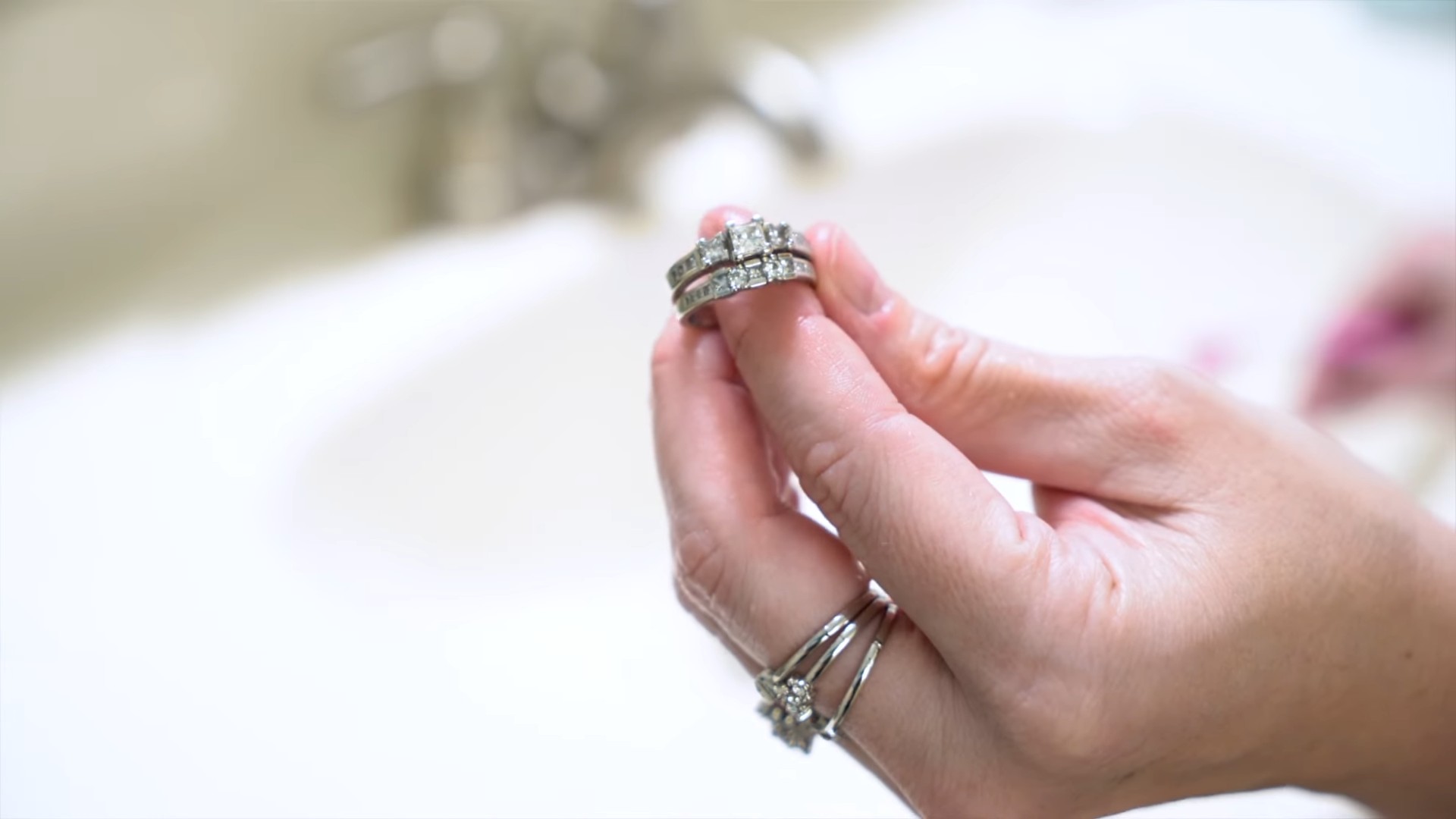
Conclusion
So, there you have it! Unlocking the surprising power of toothpaste extends far beyond just oral hygiene. We’ve explored a range of clever and effective cleaning hacks that leverage the mild abrasives and cleaning agents found in your everyday tube of toothpaste. From restoring the shine to your jewelry and banishing stubborn stains on your clothing to revitalizing your sneakers and even tackling those pesky water rings on wooden furniture, the possibilities are truly remarkable.
Why is this DIY trick a must-try? Because it’s incredibly accessible, cost-effective, and often uses a product you already have in your bathroom. It’s a fantastic way to reduce your reliance on harsh chemical cleaners and embrace a more sustainable and budget-friendly approach to household chores. Plus, the satisfaction of seeing those stubborn marks disappear with a simple dab of toothpaste is undeniably rewarding.
But the fun doesn’t stop there! Feel free to experiment with different types of toothpaste to see what works best for specific cleaning tasks. For instance, a whitening toothpaste might be particularly effective on light-colored surfaces, while a gel toothpaste could be gentler on delicate materials. You can also combine toothpaste with other common household ingredients like baking soda or vinegar for an extra boost of cleaning power. Just remember to always test a small, inconspicuous area first to ensure compatibility and prevent any damage.
We’ve covered a lot of ground, demonstrating how toothpaste cleaning hacks can simplify your life and save you money. Now it’s your turn to put these tips into action! We encourage you to try out these DIY cleaning solutions and discover the hidden potential of your toothpaste. Don’t be afraid to get creative and adapt these techniques to suit your specific needs and challenges.
Most importantly, we want to hear about your experiences! Share your success stories, your unexpected discoveries, and any variations you’ve tried in the comments below. Let’s build a community of savvy cleaners who are passionate about finding innovative and eco-friendly ways to keep our homes sparkling. Your insights could inspire others and help us all unlock even more amazing uses for this everyday essential. So go ahead, grab that tube of toothpaste, and get ready to be amazed! Let us know what you think of these toothpaste cleaning hacks.
Frequently Asked Questions (FAQs)
Is it safe to use toothpaste on all surfaces?
No, it’s not. While toothpaste is generally mild, it does contain abrasives that can scratch delicate surfaces. Always test a small, inconspicuous area first before applying toothpaste to the entire surface. Avoid using toothpaste on soft plastics, painted surfaces, or anything that is easily scratched. For sensitive materials, consider diluting the toothpaste with water or using a gel toothpaste, which tends to be less abrasive. Also, be cautious when using toothpaste on electronics, as moisture can cause damage.
What type of toothpaste is best for cleaning?
The best type of toothpaste for cleaning depends on the specific task. For general cleaning, a standard white toothpaste is usually sufficient. Whitening toothpaste can be effective for removing stains on light-colored surfaces, but be mindful of its potentially stronger abrasive properties. Gel toothpaste is generally gentler and may be preferable for delicate materials. Avoid using toothpaste with added ingredients like charcoal or glitter, as these could cause staining or scratching. Ultimately, experimentation is key to finding the right toothpaste for your needs.
Can I use toothpaste to clean my phone screen?
While some sources suggest using toothpaste to remove scratches from phone screens, it’s generally not recommended. The abrasives in toothpaste can actually worsen scratches or damage the screen’s coating. Instead, opt for specialized screen cleaning solutions or a microfiber cloth. If you’re determined to try toothpaste, use a very small amount of gel toothpaste diluted with water and apply it gently with a soft cloth. However, proceed with extreme caution and at your own risk.
How do I remove toothpaste residue after cleaning?
After cleaning with toothpaste, it’s essential to remove any residue thoroughly. Use a damp cloth to wipe away the toothpaste, rinsing the cloth frequently. For hard-to-reach areas, a cotton swab or toothbrush can be helpful. Ensure that all traces of toothpaste are removed to prevent a dull or sticky finish. If necessary, you can use a mild soap solution to help dissolve any stubborn residue. Finally, dry the surface with a clean cloth to restore its shine.
Can toothpaste remove permanent marker stains?
Toothpaste can sometimes be effective in removing permanent marker stains, especially on non-porous surfaces like plastic or metal. Apply a generous amount of toothpaste to the stain and let it sit for a few minutes. Then, gently rub the area with a damp cloth or sponge. The abrasives in the toothpaste can help lift the ink from the surface. You may need to repeat the process several times to completely remove the stain. For stubborn stains, you can try combining toothpaste with baking soda or rubbing alcohol.
Is it safe to use toothpaste on jewelry?
Yes, toothpaste can be a safe and effective way to clean most types of jewelry, especially silver and gold. However, avoid using toothpaste on delicate gemstones like pearls, opals, or emeralds, as the abrasives can scratch their surfaces. To clean jewelry with toothpaste, apply a small amount to a soft toothbrush or cloth and gently scrub the jewelry. Rinse thoroughly with water and dry with a clean cloth. For intricate designs, use a cotton swab to reach into crevices.
Can toothpaste clean shoes?
Yes, toothpaste can be used to clean shoes, particularly white sneakers. Apply toothpaste to the dirty areas of the shoe, such as the rubber soles or canvas uppers. Let it sit for a few minutes, then scrub with a brush or cloth. Rinse thoroughly with water and allow the shoes to air dry. Toothpaste can help remove dirt, scuffs, and stains, leaving your shoes looking brighter and cleaner.
Are there any surfaces I should absolutely avoid cleaning with toothpaste?
Yes, there are several surfaces that you should avoid cleaning with toothpaste:
* **Soft Plastics:** Toothpaste can scratch and dull the surface of soft plastics.
* **Painted Surfaces:** The abrasives in toothpaste can damage the paint.
* **Delicate Gemstones:** Pearls, opals, emeralds, and other delicate gemstones can be scratched by toothpaste.
* **Electronics:** Moisture from toothpaste can damage electronic components.
* **Certain Metals:** While safe for gold and silver, avoid using toothpaste on plated metals, as it can remove the plating.
* **Wood Furniture:** While it can remove water rings, use with extreme caution and test in an inconspicuous area first. The abrasives can damage the finish.
How often can I use toothpaste for cleaning?
While toothpaste can be a helpful cleaning agent, it’s best to use it sparingly. Overuse can lead to scratching or damage to surfaces. For most cleaning tasks, using toothpaste once in a while is sufficient. If you find yourself needing to clean a particular item frequently, consider using a cleaning product specifically designed for that purpose.
What are some alternative cleaning agents I can use instead of toothpaste?
If you’re concerned about using toothpaste on certain surfaces, there are several alternative cleaning agents you can try:
* **Baking Soda:** A gentle abrasive that can be used to clean a variety of surfaces.
* **Vinegar:** An effective cleaner and disinfectant.
* **Lemon Juice:** A natural cleaner and deodorizer.
* **Dish Soap:** A mild cleaner that can be used on most surfaces.
* **Specialized Cleaning Products:** Products designed for specific cleaning tasks, such as jewelry cleaner or screen cleaner.
Remember to always test any cleaning agent in a small, inconspicuous area before applying it to the entire surface.

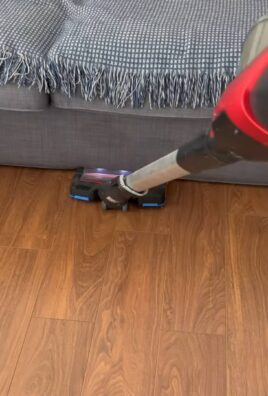
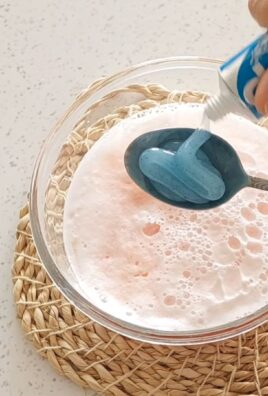
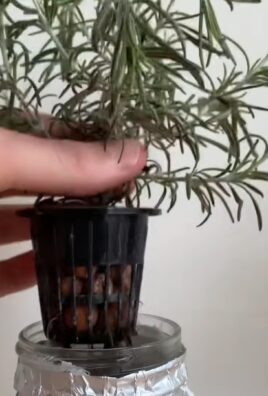
Leave a Comment